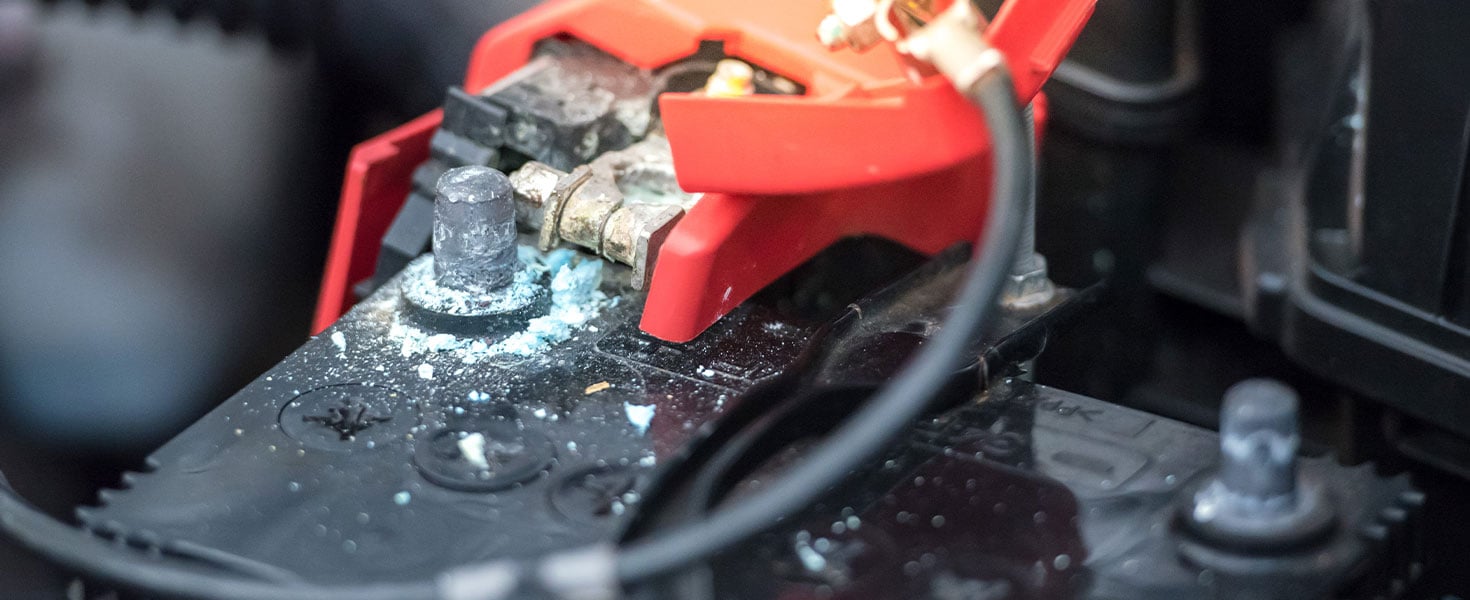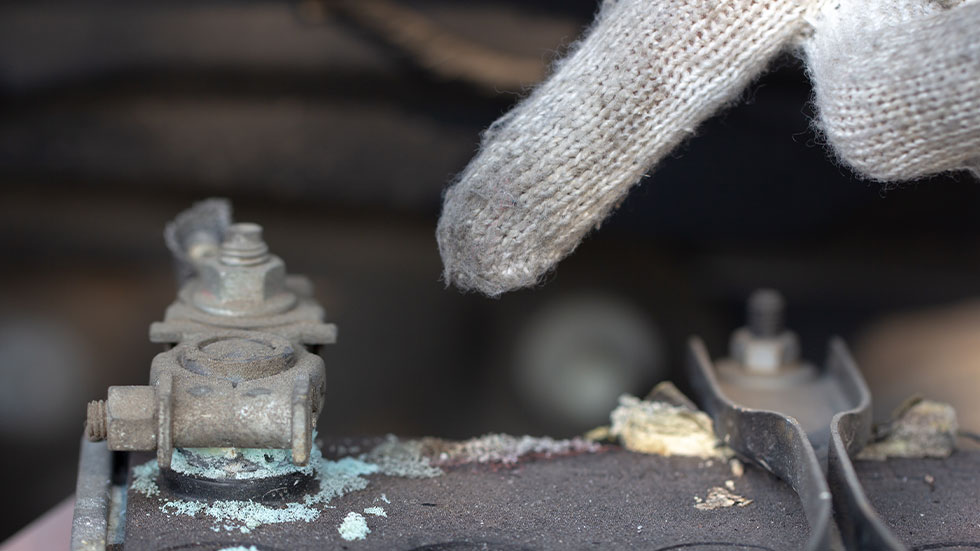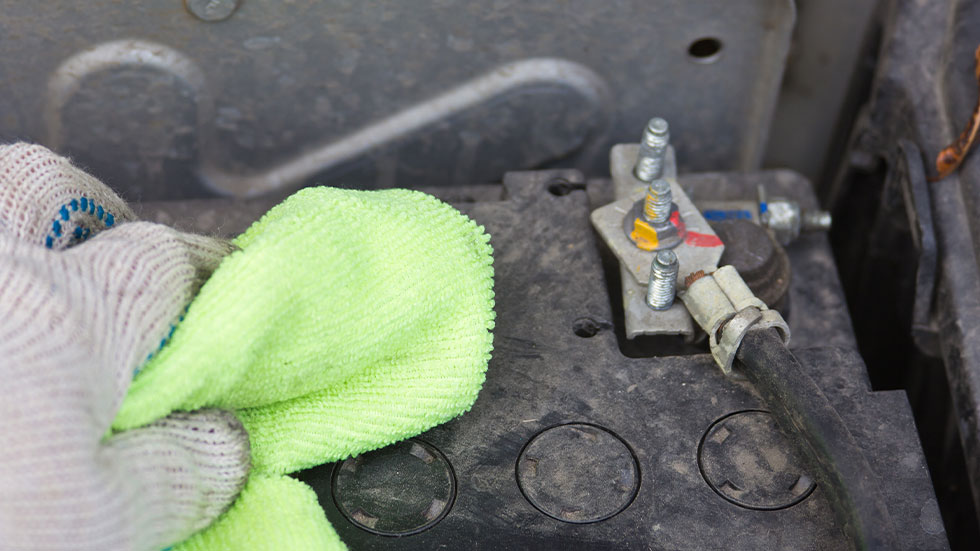How to Check for Car Battery Corrosion
Find out what causes car battery corrosion—plus, how to clean car battery corrosion to extend the life of your car’s battery


Your car battery, just like every other component on a combustion engine vehicle, will lose its ability to hold a charge over time. In fact, the average lifespan of a car battery is about five years, provided the vehicle's electrical system is in good working order and the alternator keeps it charged well.
Although it's easy for drivers to diagnose a dead battery when they turn the key and the car won't start, identifying signs of a dying battery beforehand can be a bit more of a guessing game.
One surefire sign that your battery needs some TLC is car battery corrosion around the terminals. Appearing as a green or white flaky substance that can look like mold, battery terminal corrosion is relatively common. But if it is left untreated, it can affect how your car runs as well as shorten the life of your battery.

HOW TO CHECK FOR CAR BATTERY CORROSION
Most car batteries are placed under the hood of your vehicle, so simply popping the hood will give you easy access to check your battery and its terminals. If by chance your vehicle doesn't have the battery under the hood, consult your owner's manual to find its location.
Once you've found the battery, you'll want to closely inspect the positive and negative posts as well as the cables from your car that are attached to them. Any exposed metal, either on the battery itself or the cables connecting your vehicle, can experience corrosion.
Lead acid batteries use a combination of liquid acid and lead within the battery that converts sulfuric acid into electricity. As the electricity flows out of your battery and into the vehicle, this chemical reaction creates electrolyte vapors and hydrogen gas that can condense on the metal and lead to corrosion. This is a natural, chemical reaction. So, while you can stay on top of corrosion by cleaning the battery regularly, you can't prevent it entirely.

HOW TO CLEAN CAR BATTERY CORROSION
If your terminals are corroded, this inhibits the flow of electricity from your battery, so you may notice things like slow cranking, dimmed headlights, or that your car won't start. The good news is that with a little elbow grease and a few household items, you can easily discover how to clean battery corrosion and get the power flowing again.
Mix a solution of baking soda and warm water. This will help neutralize the corrosion. Be sure to have some latex gloves and a clean cloth or rag on hand. Dip your rag in the solution and wipe the corrosion away. NEVER dump the solution on top of your battery as the neutralizing properties of baking soda could damage the acid inside it and completely ruin your battery. Instead, clean gently but thoroughly using the cloth and be sure to clean the ends of your battery cables as well.
